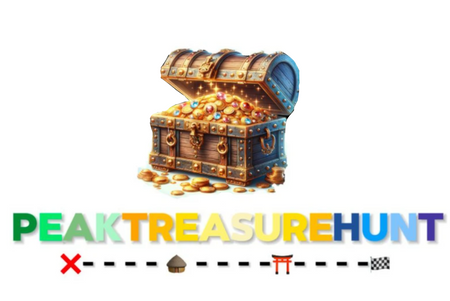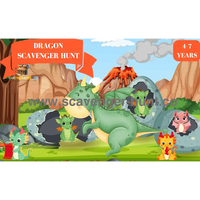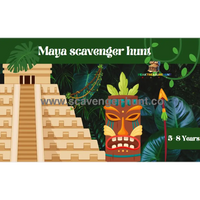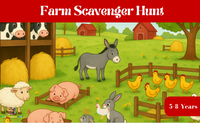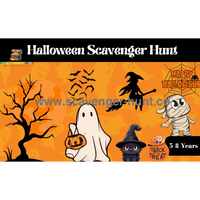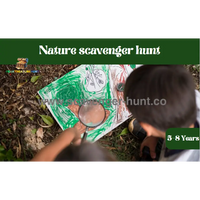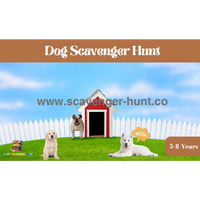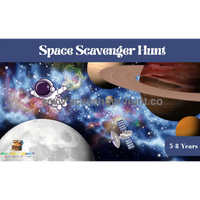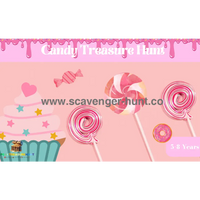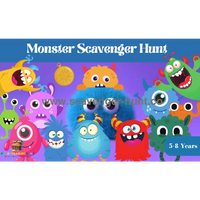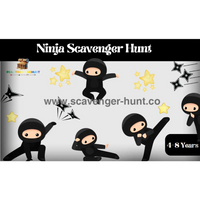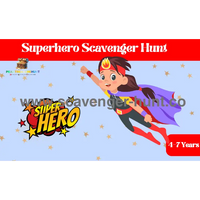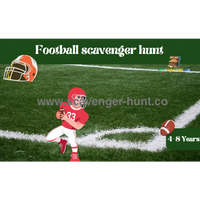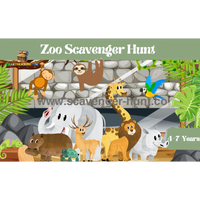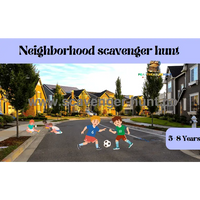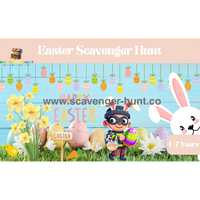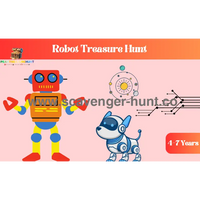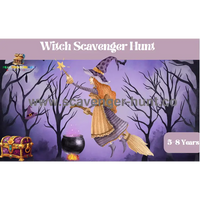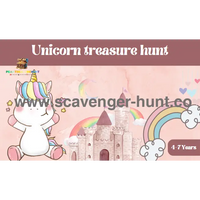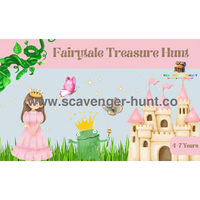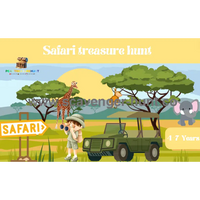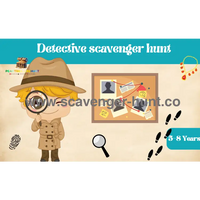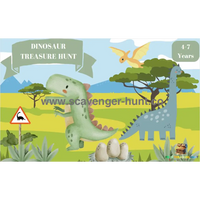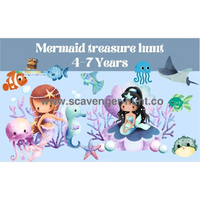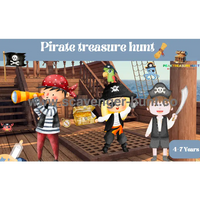Ultimate Guide to Planning a Fun and Safe Scavenger Hunt for Kids
Planning a scavenger hunt for kids can be a delightful and engaging experience for everyone involved. Whether it's for a birthday party, a family gathering, or just a fun weekend activity, a well-organized scavenger hunt can provide hours of entertainment and create lasting memories. In this guide, we’ll walk you through the steps to organize a scavenger hunt for kids, ensuring that it’s both fun and safe. We’ll also answer some frequently asked questions to help you get started.
Step 1: Choose a Theme
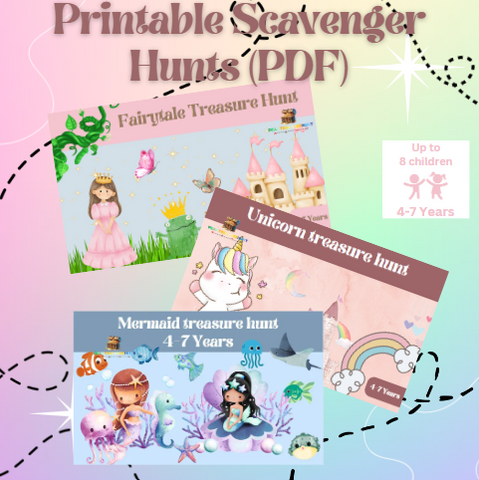

Step 2: Select the Location
The location of the scavenger hunt is a crucial factor that influences the overall experience and success of the event. It should be chosen based on the theme of the scavenger hunt, the age of the participants, and the size of the group. Here are some location ideas to consider for different types of scavenger hunts:
Indoor Scavenger Hunt
An indoor scavenger hunt is perfect for younger kids or when outdoor conditions are unfavorable. It offers a controlled environment where you can easily manage and supervise the game. Here’s how to make the most of an indoor setting:
-
Single Room: For very young children, keeping the hunt within a single room simplifies the game and makes it easier to manage. You can hide items in various places around the room, such as under cushions, inside drawers, or behind furniture. This setup is also great for small groups or intimate gatherings.
-
Multiple Rooms: For a more extensive adventure, use multiple rooms in your house. Create a series of clues that lead from one room to the next, ensuring that the game remains engaging and varied. Each room can have its own set of clues or items to find, increasing the complexity and excitement of the hunt.
-
Themed Decor: Enhance the indoor experience by decorating the rooms according to the scavenger hunt theme. For example, if you’re doing a pirate hunt, you can decorate with pirate flags and treasure maps, adding to the immersive experience.
Outdoor Scavenger Hunt
Outdoor scavenger hunts are ideal for older kids and larger groups, as they provide a spacious environment with plenty of opportunities for exploration. Here’s how to optimize an outdoor location:
-
Parks: Parks offer diverse terrains and natural elements that can make the scavenger hunt more exciting. You can use features like playground equipment, trees, and benches to hide clues or items. This setting is great for themes like Nature Explorer or Pirate Treasure Hunt.
-
Backyards: A backyard provides a more controlled outdoor environment where you can still include a variety of hiding spots and challenges. It’s a great choice for families with young children or those who prefer a private setting. Consider using garden elements, play structures, and garden furniture as part of the hunt.
-
School Grounds: If you have access to school grounds or a community center, these locations can be perfect for larger groups and more elaborate hunts. The variety of spaces, such as classrooms, playgrounds, and sports fields, allows for creative clue placement and diverse challenges.
Neighborhood Scavenger Hunt
For a truly adventurous and expansive experience, a neighborhood scavenger hunt extends the game beyond the confines of your property. This type of hunt works well for older kids who enjoy exploring and is ideal for larger communities or events. Here’s how to manage a neighborhood scavenger hunt effectively:
-
Local Landmarks: Use well-known landmarks or community features as clue locations. Parks, statues, community centers, and local businesses can all serve as interesting and safe points of interest for the scavenger hunt.
-
Safety and Permissions: Ensure you have the necessary permissions from local authorities or property owners before organizing a neighborhood scavenger hunt. Make safety a priority by clearly outlining boundaries and rules for the kids to follow. It’s also a good idea to have adult supervision throughout the event to ensure that everyone stays safe and adheres to the rules.
-
Community Involvement: Engage local businesses or community members by asking them to participate or sponsor the event. They can provide clues, small rewards, or even host special activities that add an extra layer of fun to the scavenger hunt.
Hybrid Locations
For a unique twist, consider combining indoor and outdoor locations. For instance, you can start the scavenger hunt indoors and then move outside for the final clues or items. This hybrid approach adds variety to the game and keeps the children engaged as they transition between different environments.
Each location offers distinct advantages and can be tailored to fit the scavenger hunt theme and age group of the participants. By carefully selecting the right setting, you can enhance the overall experience and ensure that the scavenger hunt is both enjoyable and memorable for all involved.
Step 3: Create the Clues and Items to Find
Once the theme and location are set, the next crucial step is to create engaging clues and decide on the items that the kids will need to find. This process is key to ensuring that the scavenger hunt is both enjoyable and challenging for all participants. Here’s a detailed approach to designing clues and items for a successful scavenger hunt:
1. Make It Age-Appropriate
Tailoring the complexity of the clues and tasks to the age of the children is essential for maintaining their interest and ensuring a positive experience.
-
For Younger Kids: Simplify clues and tasks to match their developmental stage. Use straightforward instructions and easily recognizable items. For example, instead of riddles, you might provide a list of items to find or simple instructions like “Find the red ball.” The goal is to make the hunt fun and achievable without causing frustration.
-
For Older Kids: Increase the complexity by incorporating more challenging riddles, puzzles, or multi-step clues. Older children can handle clues that require problem-solving, logic, or critical thinking. For example, you might use a coded message or a series of riddles that lead to the next clue. The added challenge will keep them engaged and make the scavenger hunt more exciting.
2. Use Visuals
Visual clues can be incredibly effective, especially for younger children who might struggle with reading or complex instructions.
-
Picture Clues: For kids who are still learning to read, use pictures or drawings to guide them. For instance, if the clue is to find a specific object, draw a simple image of that object. This visual approach helps younger children understand what they are looking for and adds a playful element to the hunt.
-
Maps and Diagrams: Create simple maps or diagrams that show where items are hidden or where the next clue can be found. For example, you could draw a basic map of the backyard with X’s marking the locations of hidden items. This method combines visual and spatial elements to make the hunt more interactive.
3. Incorporate the Theme
Incorporating the chosen theme into your clues and items adds a layer of immersion and excitement to the scavenger hunt.
-
Themed Clues: Tailor your clues to match the theme of the scavenger hunt. For a pirate theme, use phrases like “X marks the spot” or “Find the buried treasure.” For a superhero theme, you might create clues that reference superhero powers or missions, such as “Locate the secret weapon hidden by the superhero.” The themed language and references make the hunt feel more cohesive and engaging.
-
Themed Items: Ensure that the items to be found are in line with the theme. For example, if the theme is a fairy tale, the items could include small figurines of fairy tale characters, toy castles, or magic wands. Matching the items to the theme enhances the overall experience and keeps the adventure consistent.
4. Add Interactive Elements
To make the scavenger hunt even more engaging, consider incorporating interactive elements into the clues.
-
Challenges or Tasks: Along with finding items, include tasks or challenges that kids need to complete. For instance, they might have to perform a certain action, like “Do a dance move” or “Solve this puzzle” before moving on to the next clue. This adds an extra layer of fun and keeps kids active and entertained.
-
Mini-Games: Incorporate mini-games related to the theme. For example, in a pirate-themed hunt, you could have a “walk the plank” game where kids must balance on a line or plank as part of the clue. In a nature-themed hunt, you might include a brief scavenger task where they have to identify different types of leaves or flowers.
5. Test the Clues
Before the scavenger hunt begins, it’s a good idea to test the clues and ensure they work as intended.
-
Run a Trial: Conduct a trial run of the scavenger hunt with a small group or by yourself to see if the clues are clear and if the items are appropriately hidden. This helps identify any potential issues and ensures that the hunt flows smoothly.
-
Adjust as Needed: Based on the trial run, make any necessary adjustments to the clues or the hiding spots to ensure that they are neither too easy nor too difficult. Fine-tuning these elements will help create a balanced and enjoyable experience for the children.
By carefully crafting age-appropriate clues, incorporating visual elements, and aligning the clues with the chosen theme, you can create a scavenger hunt that is both fun and memorable. Each clue should contribute to the overall adventure, making the hunt engaging and rewarding for all participants.


Step 4: Organize Teams and Set Rules
Organizing teams and establishing clear rules are key steps in ensuring that the scavenger hunt runs smoothly and remains enjoyable for all participants. Here’s how to effectively manage these aspects to keep the game fair, fun, and engaging:
1. Team Size
Team size plays a significant role in the dynamics of the scavenger hunt. Choosing the right size helps ensure that every child has an opportunity to participate and contribute.
-
Smaller Teams: Generally, smaller teams work best as they allow each child to be actively involved and reduce the likelihood of conflicts or confusion. Aim for teams of 3 to 5 children, depending on the total number of participants. Smaller teams can communicate more easily and collaborate effectively, enhancing the overall experience.
-
Balancing Teams: If you have a larger group, balance the teams to ensure that each one has a similar mix of skills and abilities. This can help prevent any one team from having a significant advantage and ensures a more competitive and enjoyable game for everyone.
-
Team Roles: Assigning specific roles within each team, such as a team leader, clue reader, or item collector, can help organize the team’s efforts and keep everyone engaged. Rotating roles can also ensure that all team members get a chance to take on different responsibilities.
2. Set Clear Rules
Clear and concise rules are essential to ensure that the scavenger hunt is fair, safe, and fun for all participants.
-
Explain the Rules: Before starting the scavenger hunt, gather all the kids and clearly explain the rules. Make sure they understand where they can and cannot go, how to handle any potential issues, and what to do if they need help. For example, you might state that they must stay within certain boundaries or that they should use a specific method to retrieve clues.
-
Safety Guidelines: Emphasize safety rules, such as not running indoors, staying away from hazardous areas, and being respectful to other teams. This is especially important for outdoor hunts where there might be more potential hazards.
-
Fair Play: Encourage fair play by reminding kids to work together and follow the rules. Emphasize that the goal is to have fun, and that all teams should be respectful and supportive of one another.
-
Rules for Assistance: Clarify how teams should ask for help if they are stuck on a clue or have trouble finding an item. Decide whether teams can ask for hints or if they must solve the clues independently.
3. Time Limits
Setting a reasonable time limit helps keep the scavenger hunt dynamic and ensures that it doesn’t drag on too long.
-
Determine the Duration: The time limit should be based on the complexity of the clues and the size of the area. For younger children or simpler hunts, 30 to 45 minutes is usually sufficient. For older kids or more complex hunts, you might extend it to 1 to 2 hours.
-
Monitor the Time: Keep track of the time during the scavenger hunt and provide periodic updates to the teams. This helps them manage their efforts and keeps the game moving at a steady pace.
-
Handling Extensions: Have a plan in place for handling situations where teams are running out of time. Decide in advance whether you’ll provide additional hints or allow extra time if necessary to ensure that all teams have a chance to complete the hunt.
4. Encourage Teamwork
Encourage teamwork and cooperation within the teams to foster a positive and collaborative environment.
-
Team Building Activities: Before the scavenger hunt begins, you can include a brief team-building activity to help kids get to know each other and work together effectively. This could be a simple icebreaker game or a quick challenge that emphasizes cooperation.
-
Positive Reinforcement: Offer praise and encouragement throughout the scavenger hunt to boost morale and keep the energy high. Recognize efforts and teamwork, not just the end results, to ensure that all participants feel valued and included.
By carefully organizing teams, setting clear rules, and managing time effectively, you create a structured and enjoyable scavenger hunt experience. These elements help maintain fairness, ensure safety, and keep the game engaging for all participants, contributing to a successful and memorable event.
Step 5: Provide Prizes and Rewards
Prizes are an excellent way to motivate kids and add an extra layer of excitement to the scavenger hunt. They can also foster a sense of accomplishment and celebration. Here are some creative prize ideas to consider:
1. Themed Prizes
Themed prizes enhance the overall experience by keeping the excitement consistent with the scavenger hunt’s theme.
-
Pirate Treasure: For a pirate-themed scavenger hunt, consider prizes like pirate coins, eye patches, treasure chests, or mini pirate flags. These items not only serve as memorable keepsakes but also align perfectly with the adventure theme.
-
Detective Gear: In a mystery or detective-themed hunt, award detective badges, magnifying glasses, or notepads designed to look like detective’s journals. These prizes make the kids feel like real detectives and add to the fun of solving mysteries.
-
Superhero Swag: For a superhero-themed scavenger hunt, offer superhero masks, capes, or action figures as prizes. You can also include themed stickers or temporary tattoos featuring popular superheroes.
-
Fairy Tale Treasures: In a fairy tale-themed scavenger hunt, consider prizes such as magic wands, fairy wings, or small storybook characters. These themed items help to extend the magic of the hunt and make for delightful keepsakes.
2. Participation Rewards
Ensuring that every child receives a participation reward helps to keep the mood positive and inclusive. It reinforces the idea that the primary goal is fun and enjoyment, rather than just competition.
-
Small Treats: Hand out small, enjoyable treats like candy, stickers, or small toys. These can be simple yet appreciated rewards that make every participant feel valued.
-
Certificates: Create fun certificates or awards that acknowledge each child’s effort and participation. You can design certificates for “Best Team Player,” “Most Creative Solution,” or “Greatest Detective,” adding a personal touch to each reward.
-
Themed Goodie Bags: Prepare small goodie bags filled with theme-related items, such as temporary tattoos, small puzzles, or novelty items. This allows each child to take home a little piece of the adventure.
3. Grand Prize
A grand prize adds an element of competition and celebration for the winning team. It serves as a special reward for their hard work and success.
-
Toys and Games: Offer a toy or game that aligns with the scavenger hunt theme, such as a board game, a puzzle, or a themed action figure. This not only celebrates their victory but also provides continued enjoyment beyond the scavenger hunt.
-
Special Treats: A special treat, like a gift card to an ice cream shop, a movie voucher, or a special outing, can be a fantastic grand prize. It provides a memorable experience as a reward for the winning team’s efforts.
-
Trophy or Medal: Present a trophy, medal, or themed plaque to the winning team. These tangible rewards serve as a lasting reminder of their achievement and add a sense of accomplishment.
4. Personalized Prizes
Personalizing prizes can add an extra layer of thoughtfulness and excitement.
-
Custom Items: Consider custom items like personalized water bottles, t-shirts, or tote bags with the scavenger hunt theme or the children’s names. Personalized items are memorable and add a special touch to the rewards.
-
Photo Memories: Capture moments from the scavenger hunt and create a photo collage or mini album as a prize. This can be a wonderful way for the children to remember the event and their participation.
5. Fun and Practical Prizes
Prizes that are both fun and practical can be highly appreciated.
-
Activity Kits: Provide kits related to the scavenger hunt theme, such as craft kits, science experiments, or outdoor games. These prizes offer ongoing enjoyment and encourage creative play.
-
Books: Offer age-appropriate books that tie in with the scavenger hunt theme. For example, if the theme was nature, a nature-themed book or a story about exploration could be a thoughtful and educational prize.
By incorporating themed, participation, grand, and personalized prizes, you can create an engaging and rewarding scavenger hunt experience for all participants. These prizes not only motivate kids but also contribute to a fun and memorable event, celebrating their efforts and achievements.
Step 6: Prepare for Safety
Safety should always be a top priority when organizing a scavenger hunt for kids. Ensuring that the event is conducted safely helps to prevent accidents and ensures a positive experience for everyone involved. Here’s how to prioritize safety effectively:
1. Adult Supervision
Having adequate adult supervision is crucial for maintaining safety and managing the scavenger hunt efficiently.
-
Number of Adults: Depending on the size of the group and the complexity of the scavenger hunt, ensure there are enough adults present to supervise the children. A general guideline is to have at least one adult for every 5-10 children, but adjust this based on the activity and the children’s age.
-
Designated Supervisors: Assign specific adults to monitor different areas or teams to ensure that all parts of the scavenger hunt are covered. Having clear roles for supervisors helps in maintaining order and quickly addressing any issues that arise.
-
Emergency Contacts: Ensure that all supervising adults have access to emergency contact information for each child and are familiar with any medical conditions or allergies. This preparedness helps in managing any unexpected situations effectively.
2. First Aid Kit
A well-stocked first aid kit is essential for addressing any minor injuries or health issues that may occur during the scavenger hunt.
-
Contents: Equip the first aid kit with basic supplies such as bandages, antiseptic wipes, adhesive tape, antiseptic ointment, tweezers, and a thermometer. Include items for treating common injuries like cuts, scrapes, and insect bites.
-
Accessibility: Keep the first aid kit in an easily accessible location, preferably carried by one of the supervising adults or placed in a central, well-known spot. Ensure that all supervisors know where it is and how to use the items inside.
-
Basic Training: It’s helpful if at least one or two adults present have basic first aid training. This knowledge can be invaluable in handling minor injuries and ensuring the children’s well-being.
3. Clear Boundaries
Setting clear boundaries helps to ensure that the scavenger hunt remains safe and organized.
-
Define the Area: Clearly mark the boundaries of the scavenger hunt area, whether it’s indoors, in a backyard, or at a park. Use visual markers such as cones, ropes, or signs to delineate the area where the scavenger hunt is permitted.
-
Communicate Rules: Before the scavenger hunt begins, clearly explain the boundaries and rules to the children. Make sure they understand where they can and cannot go, and emphasize the importance of staying within the designated area.
-
Monitor Boundaries: During the scavenger hunt, have adults positioned at key points to monitor the boundaries and ensure that children are not wandering into restricted areas. Regularly check that the children are adhering to the set boundaries.


4. Safety Gear
Depending on the theme and location of the scavenger hunt, certain safety gear might be appropriate.
-
Outdoor Hunts: For outdoor scavenger hunts, consider providing or recommending safety gear such as hats, sunscreen, and insect repellent. If the terrain is uneven or challenging, safety footwear or knee pads might also be beneficial.
-
Indoor Hunts: For indoor scavenger hunts, ensure that the area is free from tripping hazards and that children are advised to avoid running or rough play. If there are any potential hazards, such as sharp corners or heavy objects, make sure they are securely covered or removed.
5. Emergency Plan
Have a clear emergency plan in place for handling unexpected situations.
-
Emergency Contacts: Establish a plan for contacting emergency services if needed. Ensure all adults know how to quickly access emergency numbers and have a phone readily available.
-
Incident Reporting: Have a process for reporting and documenting any incidents or accidents that occur during the scavenger hunt. This helps in managing the situation effectively and ensures that any necessary follow-up actions are taken.
6. Health Considerations
Be mindful of any health considerations specific to the participants.
-
Allergies and Medical Conditions: Gather information on any allergies or medical conditions of the children before the event. Make sure this information is accessible to all supervising adults and that appropriate accommodations are made.
-
Hydration and Breaks: Ensure that there are regular breaks and access to water, especially if the scavenger hunt is taking place in warm weather or involves physical activity.
By focusing on these safety measures, you create a secure and enjoyable environment for the scavenger hunt. Proper adult supervision, a well-stocked first aid kit, clear boundaries, appropriate safety gear, and a solid emergency plan all contribute to a successful and incident-free event.
Step 7: Kick Off the Hunt and Have Fun!
With everything in place, it’s time to start the scavenger hunt. Gather the kids, explain the rules, hand out the clues, and let the adventure begin. Don’t forget to capture the fun with photos or videos! Here’s how to start the event smoothly and ensure that it’s a memorable experience for everyone:
1. Gather the Kids
Bring all the children together to prepare them for the scavenger hunt.
-
Create a Central Meeting Point: Choose a central location where all the kids can easily gather, whether it's a designated area in your home, a park, or a specific spot in the yard. This helps ensure that everyone is present and ready before the hunt begins.
-
Build Excitement: Use this time to build excitement and set the stage for the scavenger hunt. Share a brief overview of what they can expect, emphasizing the fun and adventure ahead.
2. Explain the Rules
Clear and concise instructions are crucial for ensuring that everyone understands how the scavenger hunt will proceed.
-
Outline the Objective: Explain the main goal of the scavenger hunt, including what the kids will be searching for and how they will receive their clues. Make sure they know the theme and any special elements involved.
-
Review the Rules: Go over the rules clearly, including how to handle clues, where they can and cannot go, and any safety guidelines. Emphasize the importance of teamwork and fair play.
-
Clarify Boundaries: Reiterate the boundaries and areas where the scavenger hunt is permitted. Ensure that the kids know to stay within these limits to avoid any safety issues.
-
Discuss Assistance: Explain how they can ask for help if they get stuck. Decide whether they can request hints or if they should try to solve clues independently. Make sure they know how to get assistance from the supervising adults if needed.
3. Hand Out the Clues
Distribute the clues to each team or individual, depending on how you’ve organized the scavenger hunt.
-
Distribute Equally: Make sure each team or child receives their first clue simultaneously to ensure a fair start. If the scavenger hunt involves multiple stages or clues, provide them with clear instructions on how to proceed from one clue to the next.
-
Check Readiness: Before handing out the clues, double-check that everyone is clear on the rules and understands what they need to do. Answer any last-minute questions to avoid confusion.
4. Let the Adventure Begin
Once everything is set and the rules are understood, it’s time to start the scavenger hunt.
-
Start the Timer: If you’ve set a time limit for the scavenger hunt, start the timer to keep the game moving. Announce the beginning of the hunt to signal the start of the adventure.
-
Encourage Enthusiasm: As the kids embark on their scavenger hunt, encourage them to have fun and enjoy the experience. Offer words of encouragement and cheer them on as they progress through the clues.
5. Capture the Fun
Documenting the scavenger hunt with photos or videos adds a fun and memorable element to the event.
-
Photograph Key Moments: Take photos of the kids as they search for clues, solve puzzles, and celebrate their finds. Capture candid moments of excitement and teamwork to create lasting memories.
-
Record Videos: If possible, record short videos of the hunt, especially if there are particularly amusing or exciting moments. Videos can be a great way to relive the adventure and share it with others.
-
Share the Memories: After the scavenger hunt, consider creating a photo album or video montage to share with the participants and their families. This allows everyone to look back on the fun and enjoy the memories created during the event.
6. Conclude the Hunt
As the scavenger hunt wraps up, gather the kids together to celebrate their efforts.
-
Announce the Winners: If there are winners or a grand prize, announce them and distribute the prizes. Celebrate the achievements of all participants and acknowledge their hard work and teamwork.
-
Thank Everyone: Express appreciation to all the kids for their participation and enthusiasm. Thank the supervising adults for their help and support in making the event a success.
By following these steps, you ensure that the scavenger hunt starts smoothly and is an enjoyable experience for everyone involved. Gathering the kids, explaining the rules, handing out the clues, and capturing the fun all contribute to a successful and memorable scavenger hunt adventure.
Organize A Scavenger Hunt For Kids FAQ
How long should a scavenger hunt for kids last?
A scavenger hunt for kids typically lasts between 30 minutes to an hour, depending on their age and the complexity of the clues. For younger children, a shorter duration keeps them engaged without getting tired or bored.
What are some good scavenger hunt ideas for younger kids?
For younger kids, keep it simple with themes like a color hunt, where they find objects of specific colors, or an alphabet hunt, where they search for items that start with each letter of the alphabet. Using visual clues or pictures can also make the hunt easier and more fun.
How can I make the scavenger hunt educational?
You can make the scavenger hunt educational by incorporating learning elements into the clues or items. For example, ask the children to find objects that relate to a specific letter, shape, or number. For older kids, you can include historical facts, math problems, or science-related questions as part of the clues.
What should I do if the weather is bad?
If the weather is bad, you can easily move the scavenger hunt indoors. Use different rooms in your house or apartment, and adjust the clues to fit the indoor setting. Alternatively, consider rescheduling the hunt if an outdoor location is essential to the theme.
How can I involve older kids in the scavenger hunt?
Older kids can be involved by giving them more challenging clues or tasks to complete during the scavenger hunt. You can also assign them as team leaders or helpers for younger children, allowing them to participate in the fun while taking on more responsibility.
Conclusion
Organizing a scavenger hunt for kids is a wonderful way to bring joy and excitement to any event. By following these steps and considering the FAQ, you can ensure that your scavenger hunt is a memorable experience for everyone involved. Whether it’s indoors or outdoors, themed or simple, the key is to make it fun, safe, and engaging for all the kids participating. Happy hunting!
Discover our Complete Scavenger Hunts Collection.


HOW TO PLAN A TREASURE HUNT FOR KIDS
